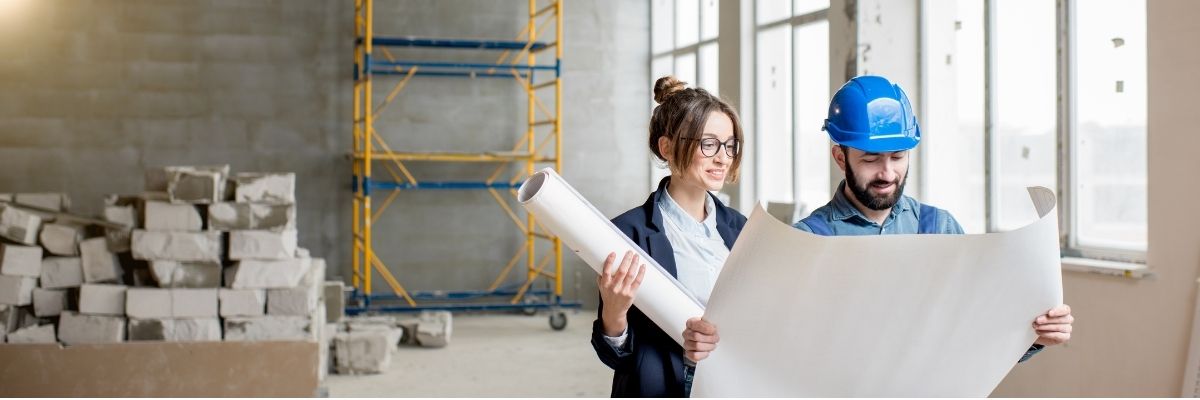 Imagine you have the opportunity to buy a bright, open-plan building because you’ve had a great idea to renovate it and convert it into a flat to live in. Or perhaps you want to invest to grow the value of the building. Can you convert the building into a dwelling no matter what?
Imagine you have the opportunity to buy a bright, open-plan building because you’ve had a great idea to renovate it and convert it into a flat to live in. Or perhaps you want to invest to grow the value of the building. Can you convert the building into a dwelling no matter what?
The reality is that you can’t just put your idea into practice because you want to. Today we tell you what you need to consider before starting the project.
Índice de contenidos
- 1 Converting a building into a dwelling: what you need to know
- 2 Requirements for converting a building into a dwelling
- 3 The cost of converting a building into a dwelling
- 3.1 The construction, installation and works tax (ICIO)
- 3.2 Deeds for change of use
- 3.3 Stamp duty, officially the AJD (Actos Jurídicos Documentados) tax
- 3.4 Registration of the dwelling on the property registry (Registro de la Propiedad)
- 3.5 Technical planning fees for converting the building into a dwelling
- 3.6 Property and assets tax (IBI)
- 4 Procedures necessary to convert a building into a dwelling
Converting a building into a dwelling: what you need to know
In principle, you can turn a building into a home provided that this does not run counter to the community property regime, the community by-laws or the constitutional deed.
There may also be certain urban and legal requirements depending on which autonomous community the building is located in. Although renovating a building may make it habitable, this does not mean it is legally considered a dwelling.
Requirements for converting a building into a dwelling
The requirements for legally turning a building into a dwelling are as follows:
- The building must be on urban land.
- You must not exceed the maximum number of dwellings permitted on the land.
- The dwelling must comply with the technical building code (Código Técnico de la Edificación – CTE).
- The dwelling must be habitable (depends on each autonomous community but it affects, for example, the number of windows you install).
- It complies with the community of owners’ by-laws. If prohibited, you will need the approval of the owners’ meeting.
The cost of converting a building into a dwelling
As well as the renovation costs, the cost of converting a building into a dwelling includes various taxes and notary documents. They are as follows:
The construction, installation and works tax (ICIO)
This is payable to the council where the property is located. It is payable by the person who applies for the building licence and amounts to 4% of the actual cost of the renovation.
Deeds for change of use
You will need to sign a deed with a notary public to change the use from building to dwelling. In some cases, you will first need to obtain permission from the autonomous community in which the building is located (this is mandatory in Asturias and Galicia, for example).
Stamp duty, officially the AJD (Actos Jurídicos Documentados) tax
This public administration fee is payable when signing any notary, commercial or administrative document and is collected by the autonomous community.
Registration of the dwelling on the property registry (Registro de la Propiedad)
Registering the new dwelling on the property registry is another expense to consider and is mandatory to ensure the legality of the new dwelling.
Technical planning fees for converting the building into a dwelling
You need to have a technical plan for adapting the building to a dwelling, created by a specialist architect.
Property and assets tax (IBI)
This tax is compulsory when you own a home. The IBI increases when you change the use of the property and you need to register with the property tax registry (Dirección General del Cadastro) to pay it annually.
Procedures necessary to convert a building into a dwelling
Consult the town plan (Plan General de Ordenación Municipal)
The aim is to find out whether there are any urban restrictions on the property, if the land is classed as urban and the number of dwellings permitted.
Check the community of owners’ by-laws
Check that you are authorised under the by-laws to make the change. If not, you can always request authorisation from the owners’ meeting.
Technical plan
You need a technical plan that complies with the technical building code. We will obtain the certificate of completion (Certificado de Fin de Obra) or the certificate of habitability (Cédula de Habitabilidad).
Works permit
This is granted by the council and requires the payment of municipal taxes and charges and the deposit of a guarantee.
Declaration of property registration change
Necessary when converting a building designed for a business into a dwelling.
First occupancy licence (Licencia de Primera Ocupación)
Because this will be the first time the property is habitable, after submitting the certificate of completion and the certificate of habitability you will receive the first occupancy licence.
Public deed
You need to sign a public deed before a notary public and then register the new dwelling on the property registry.
In conclusion, good planning is required to legally modify and renovate a building and convert it into a habitable home. Mediterráneo would like to remind you that we’re here to help you. More than 200 staff, including lawyers, engineers and economists are working on your behalf. Don’t hesitate to get in touch with us using this form.